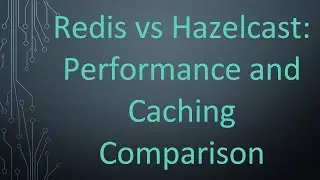Understanding the Error: not a single-group group function in SQL Queries
Dive into the meaning of the SQL error message "not a single-group group function" and learn how to effectively resolve it in your queries.
---
This video is based on the question https://stackoverflow.com/q/67071717/ asked by the user 'AlwaysLearning' ( https://stackoverflow.com/u/2725810/ ) and on the answer https://stackoverflow.com/a/67083427/ provided by the user 'William Robertson' ( https://stackoverflow.com/u/230471/ ) at 'Stack Overflow' website. Thanks to these great users and Stackexchange community for their contributions.
Visit these links for original content and any more details, such as alternate solutions, latest updates/developments on topic, comments, revision history etc. For example, the original title of the Question was: How do the words "not a single-group group function" express what they aim to express
Also, Content (except music) licensed under CC BY-SA https://meta.stackexchange.com/help/l...
The original Question post is licensed under the 'CC BY-SA 4.0' ( https://creativecommons.org/licenses/... ) license, and the original Answer post is licensed under the 'CC BY-SA 4.0' ( https://creativecommons.org/licenses/... ) license.
If anything seems off to you, please feel free to write me at vlogize [AT] gmail [DOT] com.
---
Understanding the Error: not a single-group group function in SQL Queries
When working with SQL, especially in Oracle databases, you may encounter the error message “not a single-group group function”. At first glance, this phrase can appear cryptic and confusing, particularly if you're not entirely clear on SQL aggregation functions and the GROUP BY clause. This guide will demystify this error message and provide you with a streamlined understanding of why it occurs and how to fix it.
What Is the not a single-group group function Error?
This error arises when you attempt to use an aggregate function like MAX, MIN, SUM, etc., in conjunction with a non-aggregated column without the proper GROUP BY clause. In simpler terms, if you want to summarize your data in a specific way, you must define how to group the data.
Let’s break this down more clearly.
Key Concepts
Aggregate Functions: Functions that perform a calculation on a set of values and return a single value (e.g., MAX(salary) returns the highest salary).
GROUP BY Clause: A SQL clause that groups rows that have the same values in specified columns into aggregate data.
Understanding the Context of the Error
Consider the following SQL query:
[[See Video to Reveal this Text or Code Snippet]]
In this scenario, everything works perfectly because the query groups the data by job_id, allowing the aggregate function to compute the maximum salary for each job_id.
An Error Scenario
Now, let’s take a look at a query that would trigger this error message:
[[See Video to Reveal this Text or Code Snippet]]
In this query, we attempt to select both department_id and MAX(salary) without any grouping. Since department_id isn't aggregated and there's no GROUP BY clause, the database doesn't know how to handle this. Hence, you receive the ORA-00937 error stating “not a single-group group function”.
Why the Confusing Terminology?
The terminology "not a single-group group function" might seem awkward, but it aims to convey a specific meaning:
The query was expecting one group (hence “single-group”), but you haven't provided the necessary guidance through GROUP BY.
Essentially, the database is unable to relate the aggregate function to any defined group due to the absence of the GROUP BY clause.
More Clarity in Other Languages
Interestingly, this error message has been translated into other languages, providing different perspectives on its meaning. For example:
French: "la fonction de groupe ne porte pas sur un groupe simple" translates to “the group function does not relate to a single group”.
Finnish: "ei ole yhden ryhmΣn koostefunktio" translates to “This is not a single group aggregation function,” which is arguably the clearest interpretation since it directly addresses aggregation.
Conclusion: Avoiding the Error
To avoid the “not a single-group group function” error message, follow these guidelines:
Always ensure you use a GROUP BY clause when there's a mix of aggregated and non-aggregated columns in your SQL query.
Double-check that every column in your SELECT statement that isn't wrapped in an aggregate function is included in the GROUP BY clause.
With this understanding, you should be able to navigate this common SQL pitfall and write cleaner, more efficient queries. Happy querying!

![Vakabular Sample Pack Vol. 1 Demo [Tech & Prog]](https://images.mixrolikus.cc/video/pHfyFVMnAnI)





























